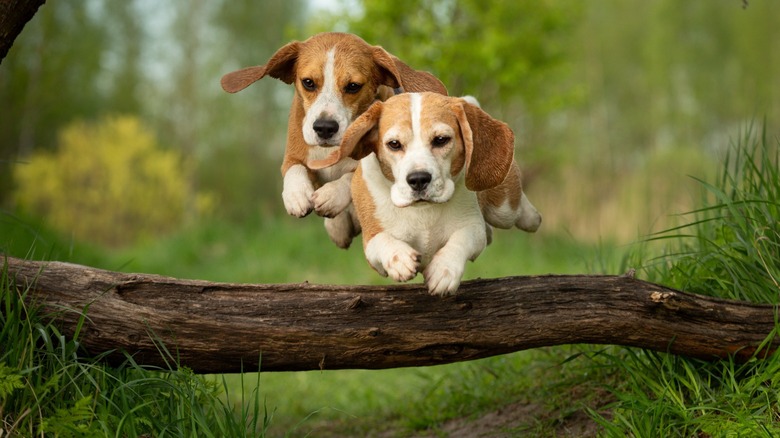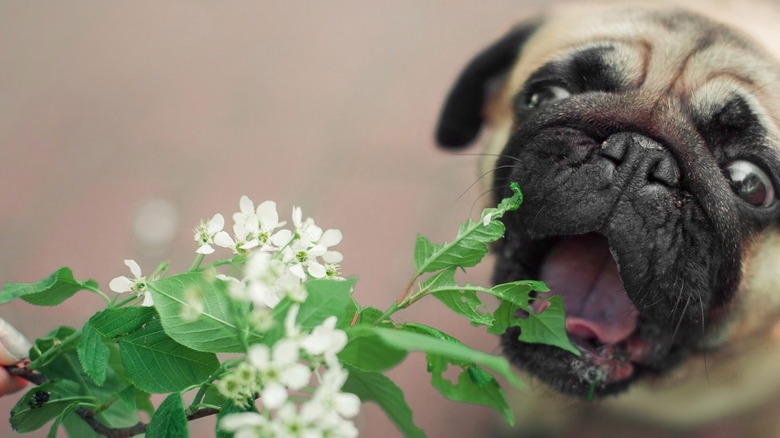How To Create A Sensory Dog Garden And Incorporate It Into Your Landscape
If you're a homeowner and a dog owner, we're sure you'll agree this latest trend is dog-gone genius! A sensory dog garden seriously brings Rover next-level fun and adventure, along with plenty of sensory-stimulating experiences. What started as an experiment in rescue shelters to help traumatized dogs has turned into a helpful learning environment for all kinds of dogs. And what's really amazing is how perfectly you can incorporate one right into your own landscaping without ever missing a beat.
A sensory dog garden is mainly focused on planting things that appeal to your dog's sense of smell, especially since it's their greatest asset. It's literally tens of thousands of times stronger than ours, and the part of the brain dedicated to analyzing and cataloging those smells is 40 times larger than ours. Focusing a sensory dog garden on smells, therefore, makes perfect sense. But there's so much more to it beyond just that; it will seriously blow your mind. The best part? It offers a solution that encompasses the happiness and safety of your pets, as well as satisfying the aesthetic appeal you want in your yard, all at the same time.
What's in a sensory dog garden?
Incidentally, sensory dog gardens are also called enrichment gardens because they typically include experiences that enrich one or more dog senses. For example, it can include things like a wading pool, a sand or mud pit, and there's even an ideal type of grass to plant for when your dog needs help with his or her digestion and instinct says to eat some! And of course, scent investigation is a common and vital theme running throughout.
Take your dog's personality into consideration when designing your sensory garden. Do you want a birdbath or a water feature? Or try setting up a hollow log for them to run through by drilling holes and stocking them with treats. Maybe your dog is the type that likes to jump through tires or make steps or tiers for your pooch to climb up and down on. Think of it as exercise and adventure for your dog, and try to encourage as much interaction as possible. You can also incorporate children's playground mulch (rubber mulch), as it is safe for dogs and easy to clean.
Plants to incorporate in the landscape
There are some fun ideas for incorporating plants that your dogs can enjoy and that you can, too. For example, try some energizing scents such as lemon or mint. These are tasty and even helpful in digestion as long as your dog doesn't go crazy eating them. Rosemary is enticing and safe for pets. If you're looking for a good kind of grass to plant, try wheatgrass! This variety is simple to grow, packed with nutrition, and aids digestion. Not only that, but it's also believed to boost your dog's energy levels.
Another idea on the other end of the spectrum is catnip, as dogs are known to love it, too. If your dog is more high-strung and you want to lean more into relaxation and calmness with the plants you choose, another great choice is an herb called valerian. It's known to help anxiety. Chamomile, as well as lavender, is also believed to have a calming effect on dogs. The point of a sensory dog garden is to engage as many of your dog's senses as possible in a pleasant and healthy environment that you can incorporate into your own landscaping. Our dogs are our companions that offer unconditional love, so why not give them a sensory dog garden to show our appreciation?

